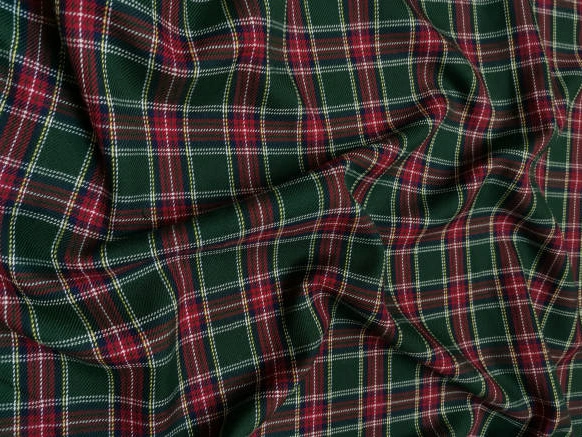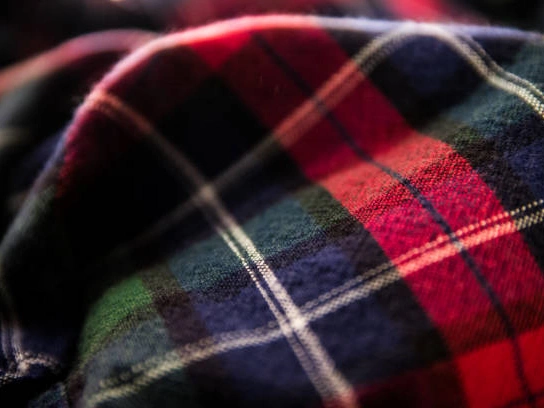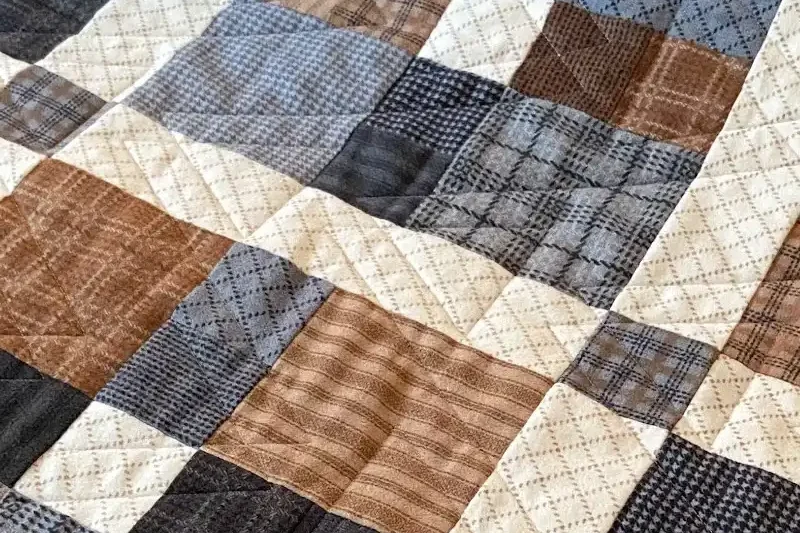Whether it’s a soft pair of pajamas, a warm shirt on a chilly morning, or a snuggly quilt, flannel evokes feelings of warmth and coziness. But have you ever stopped to wonder how this beloved textile comes to be?
As textile enthusiasts, we’re always fascinated by the journey of fabric from raw material to finished product. In this article, we’ll delve deep into “how flannel fabric is made,” exploring the unique processes that give it its signature softness and warmth.
The Raw Materials: What Goes into Making Flannel?

Before we dive into how flannel fabric is made, it’s essential to understand the foundational elements: its raw materials. While we often associate flannel with cotton, it’s actually a versatile fabric that can be crafted from various fibers. The choice of fiber significantly influences the flannel’s characteristics, including its warmth, durability, and drape.
Here are the primary raw materials used in flannel production:
- Cotton: This is by far the most common and traditional fiber used for flannel. Cotton flannel is beloved for its breathability, softness, and absorbency. It’s also relatively easy to care for and durable, making it a popular choice for apparel and bedding. When people ask, “How is flannel fabric made?” they are most often thinking of cotton flannel.
- Wool: Historically, flannel was often made from wool. Wool flannel offers superior warmth, making it ideal for colder climates and outerwear. It can be heavier and more structured than cotton flannel, and it often has a more pronounced drape. Wool flannel is less prone to wrinkling but requires more delicate care.
- Synthetic Fibers (e.g., Polyester, Viscose): In modern textile manufacturing, synthetic fibers are sometimes blended with cotton or used on their own to create flannel. Polyester flannel is known for its durability, resistance to shrinking and fading, and often a lower price point. Viscose (rayon) flannel can offer a soft, silky feel and good drape. Blends often aim to combine the best properties of different fibers, such as cotton’s breathability with polyester’s durability.
- Blends: Many flannels on the market today are blends, combining cotton with a percentage of wool, polyester, or other synthetic fibers. These blends are engineered to achieve specific properties, such as enhanced warmth, reduced shrinkage, or improved wrinkle resistance, while maintaining a soft hand.
The quality and type of these raw fibers are the first crucial steps in determining the final feel and performance of the flannel fabric.
The Different Types of Flannel: Exploring the Variety

When we ask “how is flannel fabric made,” it’s also helpful to recognize that the term “flannel” encompasses a wide range of fabrics, each with its own unique characteristics based on the fibers used, the weave, and the napping process.
Here’s a table outlining some common types of flannel:
| Type of Flannel | Primary Fiber(s) | Key Characteristics | Common Uses |
|---|---|---|---|
| Cotton Flannel | Cotton | Soft, breathable, absorbent, good for everyday wear; can be single or double-napped; ranges from lightweight to heavy | Shirts, pajamas, bedding, baby clothing, quilting, crafts |
| Wool Flannel | Wool | Very warm, durable, often heavier and more structured; excellent insulation; may be prone to shrinking if not cared for properly | Suits, trousers, jackets, blankets, upholstery |
| Plaid Flannel | Cotton, Blends | Characterized by interwoven colored stripes/bands, creating a checkered pattern; typically cotton or cotton blends | Shirts, rustic home decor, winter clothing |
| Baby Flannel | Cotton, Cotton Blends | Extra soft and lightweight, usually single-napped for delicate skin; often in pastel colors or subtle prints | Baby blankets, swaddles, burp cloths, baby clothing |
| Synthetic Flannel | Polyester, Viscose | Durable, wrinkle-resistant, often less expensive; can mimic cotton or wool flannel; may not be as breathable as natural fibers | Budget-friendly bedding, throws, some apparel, and crafts |
| Diaper Flannel | Cotton | Heavier, more absorbent cotton flannel, typically bleached white; very durable | Cloth diapers, absorbent pads, and cleaning cloths |
How is Flannel Fabric Made?

1. Raw Material Selection
The journey of flannel begins with choosing the right fibers. Wool, renowned for its excellent insulation properties, imparts a natural warmth and softness to the fabric. Cotton, on the other hand, offers breathability and a different kind of smooth texture. Synthetic materials like polyester can add durability and wrinkle resistance. When these fibers are blended in different proportions, they create a wide variety of flannel textures and qualities, catering to diverse consumer needs.
2. Carding Process
Once the fibers are selected, they enter the carding stage. This crucial step aims to remove any impurities that might have been present in the raw materials. Bypassing the fibers through a series of rollers with fine teeth, they are gently combed and aligned. This not only purifies the fibers but also sets the stage for a uniform texture in the final flannel. A well-executed carding process is essential for ensuring that the fabric feels consistent and smooth to the touch.
3. Spinning Yarn
After carding, the now clean and aligned fibers are spun into yarn. Different spinning techniques come into play here. Ring spinning, for example, produces a stronger and more twisted yarn, which is great for creating a more durable flannel. Open-end spinning, on the other hand, is faster and can result in a softer, fluffier yarn. The choice of spinning method depends on the desired characteristics of the final fabric, be it a heavy-duty flannel for outdoor wear or a delicate one for baby clothing.
4. Weaving or Knitting
The spun yarn then takes on one of two paths: weaving or knitting. Weaving creates a tighter, more structured fabric. It’s ideal for applications where a firm and stable flannel is needed, like upholstery or formal clothing. Knitting, however, offers more flexibility and elasticity. This makes knitted flannel perfect for items that require stretch, such as loungewear or accessories. The choice between weaving and knitting can significantly impact the look, feel, and functionality of the flannel product.
5. Finishing Techniques
To achieve that signature soft and fuzzy look or the desired surface finish, post-processing is vital. Brushing is a common technique that raises the fibers on the surface, creating a plush texture. This is what gives flannel blankets that irresistibly cozy feel. Pressing or calendering can be used to smooth the fabric or add a slight sheen, depending on the aesthetic goals. These finishing touches transform the fabric from a simple textile into the flannel we know and love.
6. Quality Control Points
Throughout the entire production process, strict quality control measures are in place. At the raw material stage, samples are tested for fiber content and quality. During carding and spinning, the thickness and strength of the yarn are monitored. In the weaving or knitting phase, the fabric’s density and evenness are inspected. Finally, after finishing, the colorfastness, softness, and overall appearance of the flannel are evaluated. Only by adhering to these quality benchmarks can manufacturers ensure that the flannel they produce meets the high standards of consumers.
In conclusion, the making of flannel fabric is a complex yet fascinating art. Each step, from the initial fiber selection to the final finishing touches, contributes to the unique charm and functionality of this versatile textile. Next time you wrap yourself in a flannel blanket or put on a flannel shirt, you’ll have a newfound appreciation for the craftsmanship that went into it.
How to Care for Flannel Fabric?

Now that we understand how flannel fabric is made, let’s talk about how to care for it to ensure its longevity and maintain its signature softness. Proper care is key to preserving the cozy feel and preventing issues like shrinkage or pilling.
Here are our top tips for caring for your flannel items:
- Pre-Wash (Recommended): We always recommend pre-washing flannel fabric before cutting and sewing, especially cotton flannel. Flannel is known to shrink, so pre-washing helps to minimize future shrinkage after your project is complete. Wash on a gentle cycle with cold water.
- Washing: Wash flannel items in cold or warm water on a gentle cycle with a mild detergent. Avoid hot water, which can cause excessive shrinkage and damage fibers.
- Drying: Tumble dry on low heat or air dry. High heat can cause significant shrinkage and can also lead to pilling (the formation of small fabric balls on the surface). Remove items promptly from the dryer to minimize wrinkles.
- Ironing: If needed, iron flannel on a low to medium heat setting, preferably while slightly damp, to smooth out wrinkles. Avoid high heat directly on the nap.
- Minimizing Pilling: Pilling can occur with friction. Washing flannel inside out can help reduce surface abrasion. Also, avoiding overloading your washing machine can prevent excessive rubbing.
- Storage: Store flannel items folded neatly in a cool, dry place.
By following these simple care instructions, you’ll ensure your flannel garments and home goods remain soft, warm, and beautiful for years to come.
Conclusion
In conclusion, the making of flannel fabric involves a meticulous process of weaving, napping, and finishing. This process transforms simple threads into the cozy, warm fabric we all know and love. So, the next time you snuggle up in your flannel blanket or put on your favorite flannel shirt, take a moment to appreciate the journey it has taken from thread to fabric.
